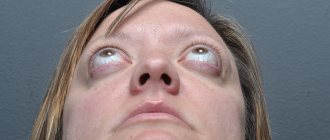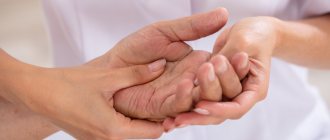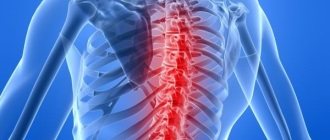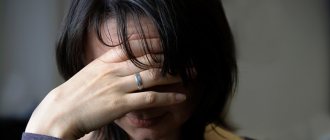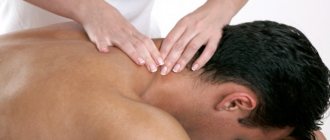Ringing in the ears and also in the head (tinnitus) is an unpleasant sensation, which in most cases is associated with partial or complete hearing loss. It also manifests itself as a consequence of other diseases or injuries - for example, a strong explosion, a loud sound, a blow to the head. Treatment is complex, depending on the causes of the disorder.
Types of noise
In different situations the noise in the head is different. This may be pulsating, knocking, ringing or squeaking, and sometimes people hear several voices at once. Depending on the nature of the noise, one or another pathology can be suspected.
The noise in the head can be permanent or appear temporarily. It can be one-sided or in both ears at once.
Sounds can also be objective and subjective. The first group includes noise that is heard by several people. Sometimes it’s a doctor with a stethoscope, sometimes it’s strangers. And subjective sounds are sounds that are noted by only one person - the patient.
Treatment for tinnitus
Since tinnitus is just a symptom of some other disease, it makes no practical sense to get rid of it alone. It is important to start fighting the underlying disease that caused it. Depending on the disease, the treatment will be completely different. However, regardless of the cause of the noise, there are some general principles for treating tinnitus. A number of medications are used to treat tinnitus:
- Nootropic drugs;
- Angioprotective drugs;
- Anticonvulsants;
- Antihypoxants and antioxidants;
- Antihistamines;
- Drugs affecting cerebral circulation.
In addition to medications, a mandatory component of conservative therapy is the use of physiotherapeutic procedures.
Nootropic therapy
The use of nootropics allows you to increase the metabolism of brain neurons, which improves the functioning of the neurosensory apparatus of the inner ear and pathways. In medical practice, drugs such as Piracetam, Phezam, Cortexin are used. Nootropic therapy helps elderly patients with a predominance of dystrophic processes in the central nervous system.
Antihistamines
They help fight if the cause of tinnitus is an inflammatory process occurring in the inner ear or in cases where noise is associated with increased sensitivity of body tissues and the occurrence of allergic changes localized in the middle and inner ear.
Anticonvulsants
Prescribed in cases where tinnitus is caused by a vibrational muscle component. Stopping the clonic contraction of the muscles of the soft palate or the muscles of the middle ear can effectively combat vibrational tinnitus. For therapy, drugs such as Difenin and Konvulex, as well as their analogues, are used.
Antihypoxic and antioxidant therapy
With pronounced trophic and degenerative changes in the inner ear in elderly people, the use of antihypoxants and antioxidants helps alleviate the symptoms of tinnitus, and also slows down the progression of degenerative disorders in the inner ear, improving its blood supply.
Drugs that increase cerebral circulation
As a result of age-related changes in older people, the vessels become less elastic, and the thickness of their walls increases, which reduces the degree of perfusion of the tissues of the inner and middle ear. To combat atherosclerotic changes in the cerebral arteries, the following drugs are used: Cavinton and Vinpocetine.
Causes of the condition
Extraneous sounds may occur due to physiological reasons. This often happens when an airplane takes off and lands, when a car accelerates to high speed, or when there is a sudden change in body position.
Pathological causes of noise in the head are usually associated with damage to an entire organ system. Sounds most often occur when:
- pathologies of the auditory analyzer;
- damage to the nervous system;
- diseases of the cardiovascular system;
- pathologies of metabolic processes;
- endocrine disorders;
- oncological process;
- taking ototoxic drugs (some antibiotics, antihypertensive drugs, salicylates);
- mental disorders;
- jaw pathologies.
A timely visit to a doctor and making a correct diagnosis will help you get rid of tinnitus.
Character of the ringing
Questioning a patient who complains about this symptom helps in diagnosing the underlying disease that caused it. To determine the disease, an otorhinolaryngologist asks the patient leading and clarifying questions to determine the nature of the ringing.
- A monotonous noise resembling a whistle, hissing, squeaking or buzzing.
- Multicomponent noise - resembles the ringing of a bell, voice timbre, and various musical elements.
Noise can be of vibrational or non-vibrational nature, which directly affects the nature of the noise.
- Vibration ringing - occurs mechanically due to the anatomical formations of the inner ear and cerebral vessels. This noise may be objective.
- Non-vibrational - always subjective, occurs as a result of improper functioning of the conductive nerve fibers in the central nervous system. May occur with mental disorders.
Diseases accompanied by noise
Pathological causes of noise in the head include a number of diseases. Extraneous sounds are typical for:
- sensorineural hearing loss;
- internal or otitis media;
- presence of sulfur plug;
- otosclerosis;
- diabetes mellitus;
- atherosclerosis;
- pathologies of the thyroid gland;
- temporal bone tumors;
- oncological lesions of the cerebellopontine angle;
- osteochondrosis of the cervical spine;
- schizophrenia;
- multiple sclerosis;
- blood vessel tumors;
- increased intracranial pressure;
- dysfunction of the temporomandibular joint;
- clonus (involuntary contraction of the muscles of the larynx).
Only a competent specialist can find the cause after an in-person examination and the appointment of an appropriate examination.
Reason: severe stress
During emotional experiences, severe fear, and anxiety, a person’s temporal muscles tense.
Constant tightness of these muscles can lead to compression of the vessels of the ear canal, which causes the sensation of noise, ringing, and buzzing in the ears. What to do?
Acupressure will help - light massage of active points with your fingertips. It should be done in a circular motion with gentle pressure.
Press the point located in the dimple above the upper lip with your index finger for 7 seconds. Then, with medium force, press the point at the end of the root of the nose, near the eyebrows - also for 7 seconds. Repeat these techniques several times a day.
For 7 seconds, apply intense pressure with your ring finger to the place where your earlobe connects to your face. Then another 7 seconds - just in front of the tongue of the ear (there, if you touch, you will feel a small hole). And finally, another 7 seconds - at the beginning of the upper part of the cartilage of the auricle (you should also feel the hole there). After exercise, a pleasant warmth usually appears, which indicates improved blood circulation.
Calm, just calm! Six ways to relieve stress
More details
Diagnostic methods
A comprehensive examination of the patient will help determine the cause of noise in the head. It includes:
- examination of the patient by a doctor;
- collecting anamnesis on chronic diseases;
- biochemical blood test, including glucose level;
- pure tone audiometry;
- X-ray of the cervical spine;
- Ultrasound of the heart;
- Ultrasound of cerebral vessels;
- ECG;
- examination by a psychiatrist;
- computed tomography or magnetic resonance imaging.
A few tests are often enough to establish a diagnosis; almost no one needs to go through the entire list. Sometimes an audiologist, cardiologist, or neurologist are involved in the examination.
Noise in my head
Novikov Andrey Viktorovich, reflexologist, neurologist
✓ Article verified by a medical expert
Noise in the head (tinnitus) is the audibility of individual sounds without an actual noise source. As a symptom of various diseases, tinnitus occurs in people of all ages. A patient suffering from this disease has a significantly reduced quality of life. The violation is practically uncontrolled. The assistance of a qualified specialist is required.
Types of tinnitus
According to scientists, the human body always has conditions for extraneous sounds. Breathing, heartbeat, blood flow, muscle contraction, and joint movement create vibration noises. A healthy person does not hear these sounds, as they are masked as external noise. Somatic (vibratory) sounds become audible in certain circumstances:
- a sharp increase in normal noise;
- heightened perception of normal sounds;
- presence of abnormal ringing.
Noises differ in the nature of perception:
- Monotonous - quiet sounds are heard in the head. A person gets used to noise and considers it the norm.
- Pulsating, associated with circulatory disorders. They manifest themselves in attacks - it becomes more difficult for the patient to cope with noise.
- Whistling (ringing) is a symptom of decreased hearing. The patient constantly strains to grasp information.
The problem of tinnitus is constantly being researched. There are countless factors influencing the appearance of sound.
Why is there noise in my head?
The most common causes of extraneous sounds are vascular and muscle pathologies. Vascular murmurs are constant and synchronous with the pulse. When the vessels are compressed, they change intensity until they disappear completely. An increase in such sounds is observed with increasing blood pressure.
Muscle noise is less constant because it is not associated with the pulse. Patients describe the sound as machine gun fire, clicking, the crackling of a grasshopper, or the fluttering of butterfly wings.
Other possible reasons include:
- depression;
- overexertion and fatigue;
- acoustic neuroma (oncology of the auditory nerve);
- Meniere's disease;
- cerebral aneurysm;
- hypertonic disease;
- cardiac arrhythmia;
- decrease in hemoglobin;
- hormonal disorders;
- head injuries;
- degenerative changes in the cervical spine;
- side effect from medications;
- decreased attention;
- brain oncology;
- exhaustion of the nervous system.
The cause of ringing in the head can be pathological changes in any part of the auditory pathway caused by a decrease in hearing level. But noise in the head is not always caused by abnormalities in the body. Sometimes a person has enough sleep and extraneous sounds stop bothering him. But if it constantly makes noise accompanied by attacks, this is a reason to consult a doctor.
Which doctor treats you?
A neurologist deals with the treatment of noise in the head, since most pathologies are associated with neuropsychiatric problems. If the violation is not confirmed, you will be referred to an otolaryngologist, therapist, or cardiologist. Modern clinics have innovative equipment and devices for diagnosing and treating extraneous sounds. The doctor will conduct an examination and develop an individual program for restoring health.
Diagnostics
At the first stage of the examination, the patient is asked questions about the frequency and nature of sounds. Collect information about the general condition based on the patient’s complaints. Using a phonendoscope, the bones of the skull are listened to.
Diagnosis of the causes of noise in the head includes:
- examination of pain points on the face;
- noise metry - determining the type of sounds;
- audiometry - measurement of hearing sensitivity;
- MR - angiography;
- Magnetic resonance imaging;
- radiography;
- echo Dopplerography.
If the problem is not identified, then the patient is advised to take a vacation and rest. If the cause of the noise is a disease, then appropriate therapy is prescribed.
In diagnosing noise in the head, the category of sounds is of great importance. There are objective and subjective noise. Objective sounds come from the auditory muscles and are heard by people around them.
Subjective sound is associated with a disorder of the auditory analyzer; only the patient hears them. There is a hypothesis that the cells of the sensitive hearing aid are activated due to some damage. A spontaneous sound signal is sent to the brain. Such sounds are regarded as sounds of danger and seem ominous and frightening. At the beginning of such noise, a person panics. But over time, the feeling of anxiety goes away, although the patient feels discomfort when the ringing occurs.
Treatment and prognosis
Treatment for noise in the head is based on different methods, one of which is TRT therapy. This technique is aimed at getting the patient accustomed to their own noise on a conscious level. Therapy will be effective if it is impossible to get rid of tinnitus forever.
What is the danger of noise in the head? Subjective sound does not pose any threat to life. But hearing individual signals becomes real torture for the patient. Some patients say that they constantly hear extraneous sounds, while others say that they hear them periodically. For some people the noise hardly bothers them, for others this condition causes serious concern.
If dangerous diseases are detected, the neurologist prescribes a set of drugs aimed at eliminating the disease. Surgery is possible, for example, if the tumor of the auditory nerve progresses.
The task of the attending physician is to reduce auditory noise in order to return the patient to a full life. Cognitive behavioral therapy is used - a form of changing cognitive, emotional and behavioral reactions to noise perception. This method of psychological influence is necessarily applicable in the presence of pathological disorders.
Sound therapy - creates an artificial sound of rain, the sound of waves or a waterfall. The essence of the method is that the additionally formed sound is perceived less disturbingly, masking the noise in the head.
It is possible to completely get rid of tinnitus in rare cases. But there is always an alternative to the perception of painful sounds. Be sure to undergo neuropsychological counseling, which will help you get used to the current noise, cope with your emotional state, sleep disorders, concentration problems, and problems in your professional and social life.
Rehabilitation and result
The effectiveness of therapy will depend on the patient. You need to be patient and time. Follow all recommendations of your doctor. Do physical exercise, water treatments, relax. Rehabilitation involves the use of alternative techniques - yoga, relaxation, meditation. Gain strength and be healthy!
Treatment Options
You can get rid of sounds only after identifying the cause of their occurrence. The treatment of noise in the head is carried out by the doctor whose competence is the diagnosis.
Most patients benefit from physical therapy and massage. But in the presence of serious diagnoses, medication will be required, and in case of a tumor, radiation or chemotherapy. Surgical treatment is rarely used.
The noise in your head cannot be ignored. It may signal the development of a serious pathology. The sooner the patient consults a doctor, the higher the chances of a full recovery.
Read also: Pain in the back of the head
Dear patients! Remember that only a qualified doctor can make an accurate diagnosis, determine the causes and nature of the disease, and prescribe effective treatment. You can make an appointment with our specialists or call a doctor at home by calling 8-(4822)-33-00-33
Be healthy and happy!
Causes
Why is there a noise in my head, what should I do? Let's find out the reasons for this pathology:
- Compaction of the walls of blood vessels due to the accumulation of cholesterol and calcium in their walls, the appearance of cholesterol plaques, and the development of atherosclerosis. A large number of plaques throughout the vessel reduce the elasticity of the vascular wall; it does not dampen the strong shock of the pulse wave as blood passes through the vessels. The effect of blood moving through a rigid pipe is similar to the flow of water through steel pipes. A noise appears that a person hears in his head. In fact, he hears the movement of blood through the vessels of the head.
- An increase in cerebral vascular tone due to disruption of nervous regulation, the formation of a large number of biologically active substances during stress. Blood beats harder against the dense walls of blood vessels, which is why a person hears a noise in the head.
- Natural wear and tear of the walls of brain vessels, their compaction, and decrease in elasticity.
- The formation of a protrusion on the wall of the artery of the brain, due to which the nature of blood circulation in it changes, stagnation of blood appears in the changed area.
- Poor blood flow to the brain tissues due to damaged arteries at the level of the upper vertebrae.
- Focal changes in the brain matter in elderly people due to circulatory disorders and inhibition of metabolic processes.
- Poor supply of nutrients and B vitamins necessary for productive brain function.
- Mental abnormalities in which a person thinks he hears some sounds.
- Blockage of the ear canal in the ear, reducing the elasticity of the eardrum, which deforms the conduction and perception of sounds.
IP – LYING ON YOUR BACK
- Arms extended behind the head, stretching in four counts. Repeat 6-8 times.
- Arms are extended behind the head, without lifting your hands from the floor, raise your head and look at your outstretched socks. Repeat 4-6 times
- “Bicycle” - put your hands under your head, legs bent, 3 sets for a count of 10.
- Legs bent at the knees, straighten your legs up, spread them apart, then connect them and lower them down. Repeat 6-8 times.
- Diaphragmatic breathing: inhale - inflate the stomach, exhale - draw in the stomach, 6-8 times.
IP – SITTING ON A CHAIR OR STOOL
- Arms are lowered along the body, tilt your head forward - slowly and touch your chin to your chest, and just as slowly come back. 6-8 times
- The arms are lowered along the body - we bend the arms at the elbows, move the elbows back - inhale, return to the starting position - exhale. 4-6 repetitions.
- Hands on knees, palms between legs. For 2 counts, tilt the head and torso to the left, return to the starting point, for 3-4 counts, tilt the head and torso to the right, return to the starting point. 4-6 repetitions.
- Rest – “coachman” pose: head tilted forward, hands resting loosely on knees, breathing calmly. 1-2 minutes.
IP – LYING ON YOUR Stomach
- Stretch your arms forward without lifting your chin from the floor, raise your legs, spread them, connect them, then lower them. Repeat 4-6 times.
- “Swimming” - raise your upper body and perform a movement with your arms as if swimming, without touching the floor with your hands. 4-6 repetitions of 4 movements on each hand.
- Hands in a “lock” behind your head, bend over 4-6 times.
- “Wings” - raise your arms and torso above the floor, spread your arms to the sides and swing them up and down 6 times
- Rest.
IP – SITTING ON A CHAIR OR STOOL
- Keep your head and shoulders straight. Slowly turn your head as far to the right as possible (5 times). Move to the left the same number of times.
- Lower your chin to your neck. Turn your head first 5 times to the right and then 5 times to the left.
- Throw your head back. Try to touch your right ear to your right shoulder (5 times). Perform the same movement, trying to touch your left shoulder with your left ear (5 times).
***The exercise therapy complex is designed for “dummies”, i.e.
a person who has never played sports, so it’s easy to do. First, within 2 months you must master the exercise therapy complex to the point of automatism, doing one approach of each exercise, then from the 3rd month the number of approaches can be increased to 2 for each exercise. Alternate exercises with rest, do not strain. Additional information can be obtained from our medical center.
